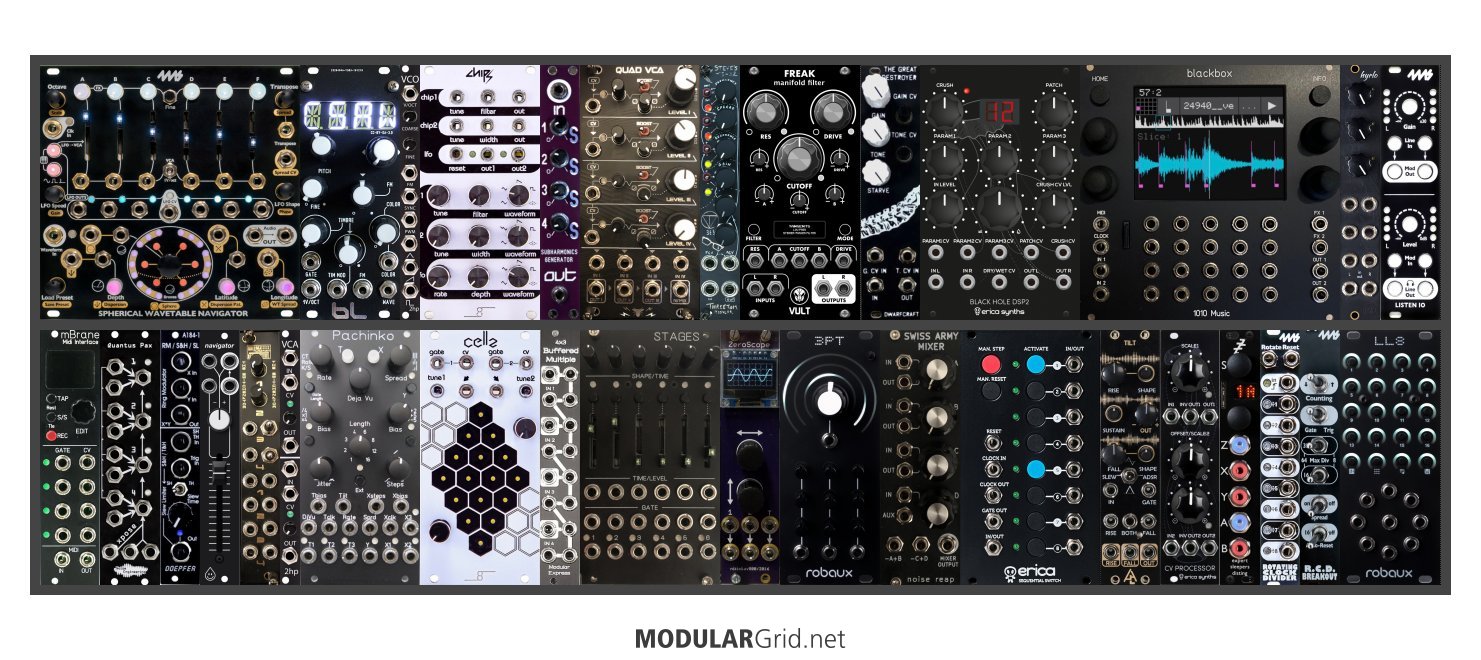I'm doing my best to keep Audio path in the upper row and CV modules in the lower row. I intend to use the modular in a larger setup with a Squarp Pyramid and a host of other synths, so my goal was to develop a multi-voice modular, in particular with wavetable capabilities as it's the only form of synthesis that I'm missing (that I like) that could serve as a canvas to experiment and develop a foundational melody or chord progression or hook/pads/etc. and then build upon them with the other synths in the setup. However, I wanted to be sure that I could really play the modular on it's own if I wanted, hence the BitBox sampler and things like Cellz staying in the rack. Pachinko (marbles) can also serve as a Note source if I don't have a midi controller/sequencer handy.
I need another filter (or two) on top of the Freak Manifold Filter I have. I decided on the viol ruina as it could also give me some extra distortion, but it isn't exactly versatile and I haven't bought it yet. I'm a big fan of the Jove sound, but I'm also thinking about TipTop Forbidden Planet since it has multiple inputs and could be used to blend different parts quite nicely. Any thoughts?
Any other utlities/logic/wave-modulators that you might suggest? Thanks to the disting (missing in shot for some reason, sitting between Swiss Army Mixer and Sequential Switch) I can try a lot of things out, but I'm also not very good at envisioning how I could use logic processors and some other utilities in this setup. It's really the last category of modules that is still mysterious to me in terms of how they best function in a synth patch.
Anyways, comments/criticisms/complaints?


